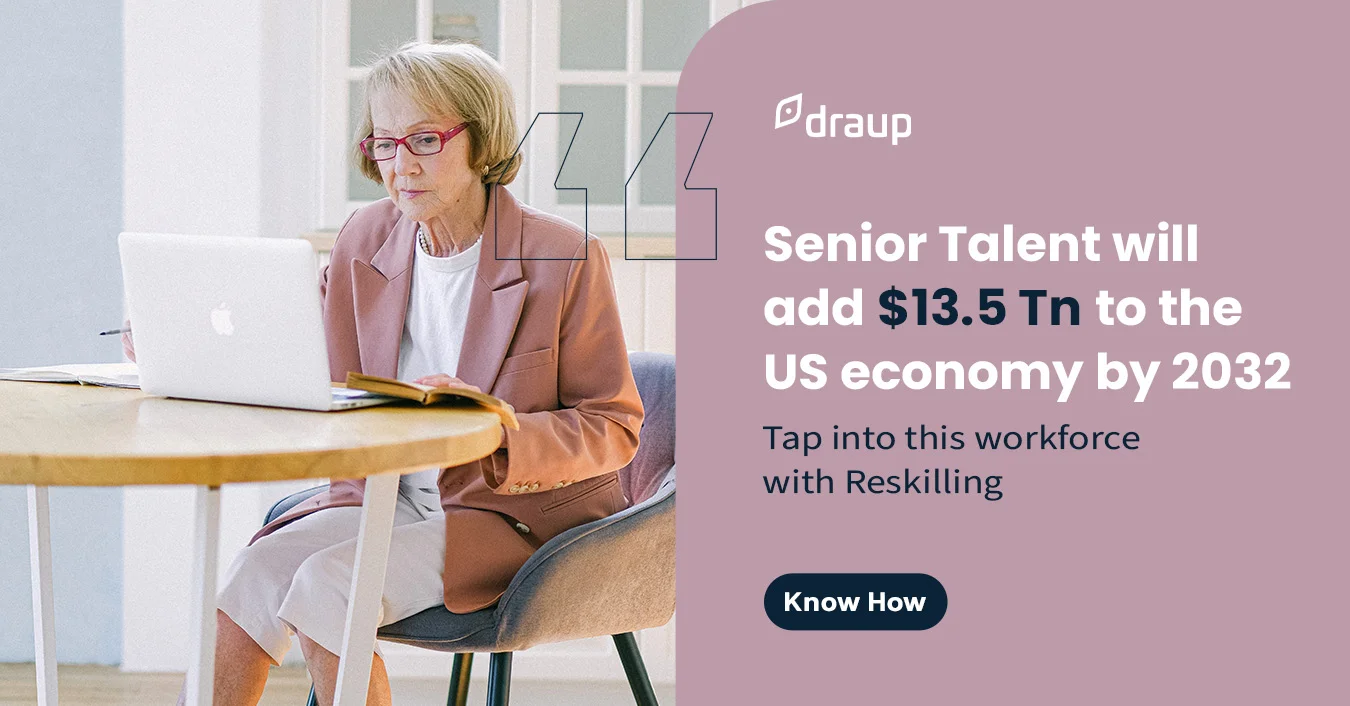1/3rd of workers over 60 years old say they enjoy work too much to quit, which may not be due to money issues. With millennial talent lacking, employers are just years away from a talent and experience gap.
But talent management can use this to their advantage. Let us see how you can align your workforce strategies to meet the demands of the aging workforce.
Find positions that befit skills
Talent management must use available talent. Age may affect certain skillsets but may enhance certain skills crucial to business success.
The fact that older generations have not crossed the digital divide is a common misconception. The truth is they have adapted to meet the increasing demands of technology.
Evaluate their skill set. They might be achievers in less physically demanding roles.
As per research, employers look for seven soft skills, and older employees mostly have them.
- Critical thinking is the ability to analyze information and form a reasonable judgment.
- Teamwork creates a positive environment. Leadership skills and a collaborative attitude can increase productivity.
- Problem-solving as it is crucial to solving work-related issues quickly to everyone’s satisfaction.
- Communication keeps managers, customers, and employees informed. Older employees have had time to develop their interpersonal skills and communicate effectively.
- Adaptability and flexibility help smooth work transition and adapt to uncertain times.
- A strong work ethic will help strive and meet expectations.
- With dependability, you can count on employees to finish various tasks.
Prioritize older workers for front-office positions
Talent management can focus on senior workers’ loyalty, track records, ability, and common sense. Vodafone has found out that devoted senior workers boost the company’s image and provide higher-quality work and more attention to detail.
Research found that older workers have abundant soft skills like enthusiasm, customer rapport, and conscientiousness. Home Depot is renowned for hiring older store clerks for the experience-based knowledge that customers require.
According to a survey, older workers exhibit better levels of respect, maturity, and networking skills than younger workers.
Provide engagement, health, and wellbeing
75% of workers over 50 have a chronic illness. Talent management must understand issues and make suitable accommodations.
How do older workers feel, and what areas require attention to promote engagement and wellbeing? Answering these questions will lead to a happier, healthier, more engaged workforce, decreasing attrition.
HR and talent management must analyze accessibility for workers with age-related ailments causing mobility issues and alter health and wellness initiatives to retain these people.
Revamp health insurance and disability programs, create strong retirement plans, or expand paid family leave alternatives.
Grandparental leave can also help older employees.
Allow flexible scheduling
Improved connection and blurred work-home lines mean that young and old employees require greater flexibility.
78% of workers over 50 desire more flexible hours to improve their work experience.
Many older workers have personal commitments like kids, sick spouses, or aging relatives. Talent management must support flexibility as long as performance doesn’t suffer.
Options for such older talent include:
- Allowing full-time employees to slowly transition to part-time.
- Hiring retirees for short-term projects.
- Offering part-time roles or seasonal positions for semi-retirees.
- Implementing job-sharing opportunities.
Create phased retirement
Talent management must create an exit strategy for older workers, especially those who see retirement on the horizon but aren’t ready yet.
Phased retirement allows workers to reduce work hours gradually or be given a part-time role.
If the person is a great performer, the organization may profit. Slow retirement helps them to prepare a successor without the shock of sudden retirement.
Develop your workforce
Helping your aging workers learn skills for less-physical professions might be part of their exit strategy. Here is what talent management teams can do:
- Evaluate the workforce’s skillset and highlight inefficiencies.
- Identify technology gaps in areas that require immediate attention.
- Understand the functional abilities needed to improve operations.
Talent management can facilitate the exchange of knowledge and skills with knowledge transfer sessions. Two-way mentorship programs promote knowledge and encourage older and younger staff to talk and collaborate.
Today, it is easy to build an inexpensive online training platform, webcasts, or how-to manuals without affecting the company budget.
Employees’ age doesn’t matter. They are still your organization’s most precious asset. Create a system to leverage your workforce’s knowledge and expertise regardless of age.
Draup for Talent is a reskilling platform that helps talent management teams to:
- Improve retention
- Optimize talent costs
- Promote career growth
Additionally, this data-driven platform identifies and closes talent gaps and assists in making intelligent business solutions through D&I inspections.







